- Images (11)
- Links (1)
- Agenda
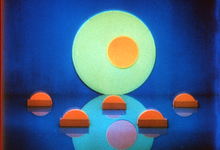
|
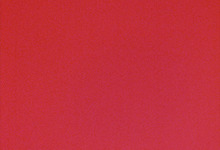
|
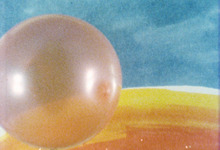
|

|
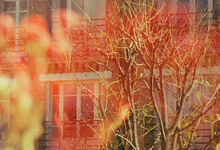
|
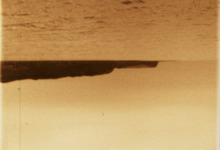
|
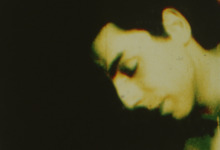
|
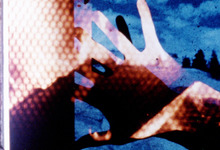
|
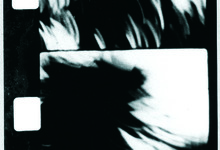
|
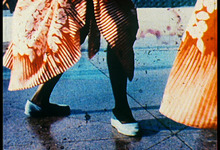
|
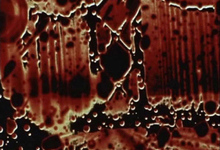
|
As part of its 14th edition, (S8) Mostra de Cinema Periférico (A Coruña, Spain) invites Light Cone to present a carte blanche with films from its collection.
This program features a selection of 16mm films from Light Cone's collection. The theme that lends structure to the selection is colour, and it aims to show how certain filmmakers have thought of colour-matter as a crucial component in their films’ composition. Colour is an element that has been worked on in multiple ways throughout the history of experimental cinema: directly filmed by the camera or subsequently introduced into the film (painting, collage, tinting), obtained through laboratory treatment or via specific optical systems. Many of these resources are explored in the films in this programme: in-camera editing, pixilation, flicker, overprinting, the use of filters, rotoscoping, optical printing, solarization, painting on film; all different techniques by means of which the colour emerges and turns into a primordial element. This session does not seek to take a tour of the canonical history of the uses of colour, but rather to celebrate certain experiments with it that enhance the vivacity and plastic possibilities of analogue cinema.
The basis chosen is avant-garde animated cinema, represented here by one of its leading figures, Oskar Fischinger. In 1933, Fischinger began making colour films thanks to Gasparcolor, a trichromatic separation process that enabled him to explore a combination of abstract forms of pure colours as a visual equivalent of the polyphonic structure in music. Those early visual music creations bear a relationship with the different theories which, as of the 17th century, have been proposing a direct analogy between the chromatic scale and musical harmony.
On trying to define his idea of absolute film, Fischinger criticized conventional cinema, conceived as a simple “moving photographed surface realism” in which the images were limited to a reproduction of the visible world. In the films presented here, the fischingerian inspiration puts forward and calls for a usage of colour far removed from any naturalistic concept of image that criss-crosses different eras and stylistic trends.
Fischinger’s studies into movement, rhythm and colour harmony have been essential for generations of animation filmmakers that came after his own, such as Jules Engel and Robert Breer. In Landscape, Engel composed his film frame by frame, creating a chromatic “score” that associates abstract painting with minimalist flicker film. In Trial Balloons, Breer used rotoscoping to combine filmed shots with sequences of animation in which he recreated and dilated the gestures and movements filmed with his camera.
As for Françoise Thomas, she was inspired by the methods of animation cinema to connect her shots to abstract graphic motifs; in Grapholetti, she re-filmed a series of shots in successive overprints, combining them with different chromatic surfaces so as to create poetic variations around the mysterious portrait of a woman smiling at the camera. This exercise of accumulating layers of colour was also used by Giovanna Puggioni in Quattro stagioni, a visual meditation whereby in-camera overprints of red, golden light and black spaces act like musical notes on a score.
The correspondences between music and colour were explored by yann beauvais in Divers-épars, a kind of deconstruction of the filmed diary based on a series of rhythmic correspondences between shots, bolstered by using colour filters and associated with the music of Alban Berg. While the chromatic scale has often been linked to musical harmony, studies on colour have also been associated with what is known in psychology as synaesthesia. Indeed, starting at the end of the 19th century, the ways in which colour in painting is related to perception and affects the viewer’s sensations have been explored.
There is a branch of experimental cinema that has been interested in the materiality of the medium and specifically its association with touch, which has sometimes been called “haptic cinema”. In Oblivion, Tom Chomont tells of the perception of the filmed body with the palpable, tactile sensuality of his images, working on the shots by means of alterations in colour (bi-packing, solarization, saturation, etc.) that appeal directly to our senses. Barbara Hammer also put the visual representation of touch into practice, especially in her research with the optical printer in the 1980s. In Place Mattes, Hammer links her own body to landscape shots, associated here with almost abstract chromatic surfaces (fire, ice) that heighten the relationship between touch and the optical effects created by using masking.
In their works, Marcelle Thirache and Caroline Avery have explored the materiality of the medium of film and how it is related to painting. Shot in Super 8, camera in hand, Palme d'or by Thirache is a celebration of colour conceived as a mere function of the variable refraction of white light: the camera movements thus inscribe light onto celluloid like a brush moving over a canvas. In Midweekend, Avery recycles and deconstructs images from found footage, eclipsing the movement and continuity between the figurative shots with the colour painted directly on the film. By examining the main characteristics of colour (luminosity, saturation, texture), these films reveal a type of purely haptic visuality that invites our gaze to move over the surface of the images and instead delve into the illusionistic depth.
The last film of the session, defined by its auteur as a synesthetic experience, is made from a series of optical and videographic treatments given to the images. In 98.3 KHz: Bridge at Electrical Storm, Al Razutis uses repeated shots of a journey across a bridge to create chromatic variations that progressively lead the images towards abstraction, and even to their own destruction through chemical disintegration and the overlaying of abstract shots created using a video synthesizer.
– Miguel Armas

|
KOMPOSITION IN BLAU
by Oskar FISCHINGER 1935 / 16mm / color / sound / 4' 00 |

|
LANDSCAPE
by Jules ENGEL 1971-1978 / 16mm / color / sound / 4' 00 |

|
TRIAL BALLOONS
by Robert BREER 1982 / 16mm / color / sound / 6' 00 |

|
GRAPHOLETTI
by Françoise THOMAS 1991 / 16mm / color / sound / 6' 00 |

|
QUATTRO STAGIONI
by Giovanna PUGGIONI 1999 / 16mm / color / silent / 3' 30 |

|
DIVERS-ÉPARS
by yann BEAUVAIS 1987 / 16mm / color / sound / 12' 00 |

|
OBLIVION
by Tom CHOMONT 1969 / 16mm / color / silent / 6' 00 |

|
PLACE MATTES
by Barbara HAMMER 1987 / 16mm / color / silent / 8' 00 |

|
PALME D'OR
by Marcelle THIRACHE 1993 / 16mm / color / silent / 4' 00 |

|
MIDWEEKEND
by Caroline AVERY 1986 / 16mm / color / silent / 8' 00 |

|
98.3 KHZ: BRIDGE AT ELECTRICAL STORM
by Al RAZUTIS 1967-1973 / 16mm / color / sound / 11' 00 |
| address |
(S8) Mostra de Cinema Periférico Sala (S8) Palexco – Mlle. de Trasatlánticos, s/n 15003 La Corogne Espagne |
|---|---|
| related link |
(S8) Mostra de Cinema Periférico
|
| rates | entrée libre dans la limite des places disponibles |